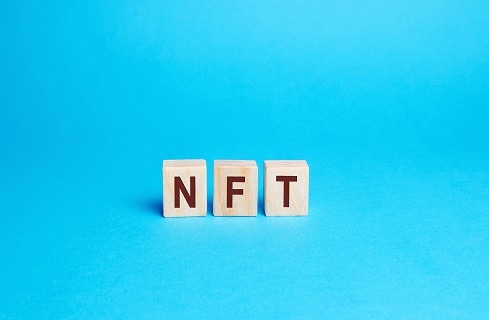At its core, the value of a non-fungible token (NFT) today rests in how it is perceived by others. But an NFT's value over time remains to be seen.

Over the past few years, the concept of non-fungible tokens (NFTs) has ballooned to represent one of the most prominent technological innovations in recent memory. At their core, NFTs are digital assets that are created, bought, sold, and traded on blockchain marketplaces, most often via cryptocurrency like Ethereum. The integration of blockchain technology allows for each NFT to have its authenticity verified as a unique digital asset by other users. Blockchain also helps to trace its chain of ownership.
Since their broader introduction in 2017 through the likes of games such as Axie Infinity, CryptoKitties, and My Crypto Heroes, NFTs have gone on to generate immense worldwide popularity with their successful integration into the realm of digital art. With some NFTs selling for millions -- and even 10s of millions -- of dollars, there has been widespread speculation regarding the true value of NFTs as a newly emerging class of digital assets.
However, like many other commodities and digital assets, most NFTs themselves hold minimal or no intrinsic value; rather, the value of NFTs lies within the fluctuating demand of consumer markets.
How NFTs Create Value
Fundamentally, the draw of NFTs is their ability to grant those who purchase them ownership over the specific digital asset, be it a piece of art, an item to be used in a video game, or even a file of former Twitter CEO Jack Dorsey’s first-ever tweet. Even if another individual technically “owns” the original piece that has been minted into an NFT (e.g., a musical artist releasing a song or music video as an NFT), the purchasing owner of the NFT can boast ownership rights to the original file. That owner can then hold on to the purchased NFT or resell it to another for a profit.
In understanding this, we see how the value of NFTs lies in their perceived value to users. For example, if multiple users within a specific consumer market view a specific NFT as rarer than others, the greater value those users will place on the NFT in question. The same holds true for collectors of fine art or sports memorabilia; value is not inherent in the pieces they acquire, but instead is found in the perception of the market. However, there is one aspect of NFTs that can allow them to generate additional value through the integration of smart contracts.
Creating Value in Perpetuity through Smart Contracts
Because the programming for smart contracts exists within the blockchain, these contracts grant users the ability to verify the authenticity and ownership of any NFT whenever a transaction is made to buy or sell it. In addition to allowing users to see who was the original creator of a specific NFT, smart contracts grant the original creators to receive a portion of each verified transaction made as a form of royalty payment.
This is perhaps the truest way through which NFTs, as a newly emerging class of digital assets, can offer direct value to their creators and consumers alike. The higher a certain NFT sells for, the more its original creator will be able to claim as royalties via the asset’s integrated smart contract.
Nerdwallet investing writer Andy Rosen says, “On the other hand, a buyer who supports a struggling creator with an NFT purchase could potentially secure a share of future earnings from other projects.” Rosen explains that another way NFTs can create value is by using serial entrepreneur and investor Gary Vaynerchuk’s VeeFriends as an example. For this collection of NFTs, each individual who purchases one obtains a free entry ticket to Vaynerchuk’s annual business conference, VeeCon. That is described as “a multi-day event exclusively for [VeeFriend] NFT holders.”
Some may be surprised to find that NFTs as a general concept hold no inherent value. This does not mean that NFTs as a digital class of assets are not valuable. While there are several factors that can influence the perceived value of any individual or collection of NFTs, these factors are almost unilaterally influenced and determined by user markets. The rarer or more useful an NFT is, or the higher a certain asset's investment potential may be, the more valuable many users will view it. Without that perceived value from a market, any NFT is no more valuable than any other asset or commodity.
Because NFTs are still an innovation to many, their true potential as a value-generator remains to be fully seen or actualized. Though this may change in the near future, until that day comes, NFTs as a whole are no more valuable than the market deems them to be.
About the Author(s)
You May Also Like







